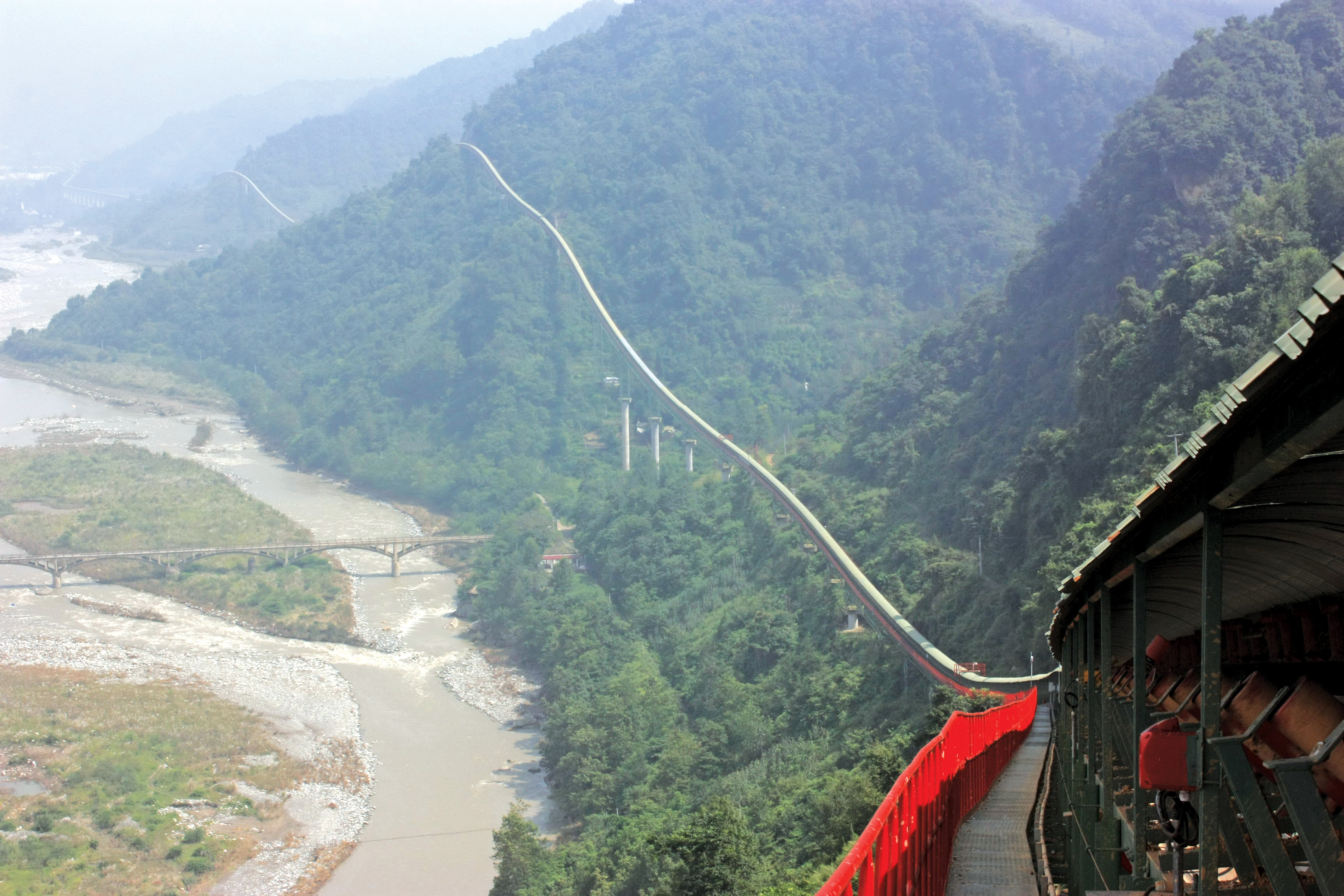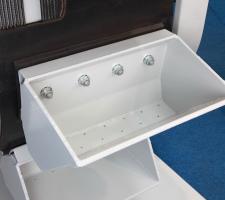
Intralogistics specialist Beumer has been demonstrating the functions of its belt conveyors.
The German company says that the curved conveyor systems are designed as open trough belt conveyors or closed pipe conveyors, and transport large quantities of bulk material from the quarry, mine or sand workings to the factory or port cost-effectively and quickly.
Belt conveyors are equipped with environmentally-friendly electrical drives and low-energy belts. Depending on the topography, the motors can be operated in generating mode. As they are mostly controllable, this enables the load to be optimally distributed on the drive unit for different operating conditions.
When the belt conveyor is running downhill, the system works in generating mode. The recovered electrical energy is fed back to the public electricity supply via a feedback unit.
When Lafarge modernised production facilities at the plant in Wössingen, Baden region, it included an overhaul of the existing belt bucket elevator to the raw mill.
Beumer offered its heavy-duty bucket elevators, allowing for higher conveying capacity and longer service life.
“Thanks to this new technology, the existing bucket elevator could easily be altered,” says Stephan Schenk, head of servicing and development at Lafarge Zement Wössingen, which places value on production methods that are energy-efficient and environmentally sound.
Now, the cement plant has a five-stage heat exchanger and a new clinker cooler.
“We changed to the energy-saving dry process with heat exchanger and pre-calciner with no interruption to the operation. To make the production more cost-effective and environmentally sound, we changed from the two-kiln operation to a single rotary kiln,” says Schenk.
The kiln line now has a much higher capacity and the system is fed with approximately 150tonnes of raw material per hour. Accordingly, the complete production has changed. Due to the increase in performance and modernisation of the kiln line, the flow rate of the bucket elevator for the raw mill had to be increased considerably. The bucket elevator transports limestone to the mill bunker.
“Due to the higher flow rates we had to face more problems with the coarse-grained material,” says Schenk.
Larger particles became repeatedly jammed between belt and bucket, causing substantial wear.
“The belt became porous after two years. A new solution had to be found both to avoid belt cracks and to meet the growing requirements. Long-term thinking was called for because a new belt is very expensive.”
The cement producer contacted manufacturers of vertical conveyors, including the Beumer Group, which has a long tradition with the Wössingen plant.
“When specifying our conditions, Beumer recommended the newly-developed technology. Central chain bucket elevators which transport limestone are subject to high wear as the raw material contains abrasive particles which act as sandpaper,” says Schenk.
After thorough consultation with the Beumer specialists only the belt and the buckets were renewed applying the new heavy-duty technology. This technology is used to feed material with particle sizes up to 120mm and up to 6% moisture into the raw mill. “The capacity is now 800tonnes per hour.”
The new bucket geometry means there is no gap between belt and bucket, and coarse-grained material does not jam during scooping and filling process.
“Beumer handled all the planning, we only had to mount the buckets and the belt.
“This solution saved us a lot of money,” says Schenk.
“The complete modification cost about €80,000. In comparison, a new conventional belt would have cost €60,000. If we assume that the Beumer solution lasts twice as long, the modification would amortise after a short period of time.”















